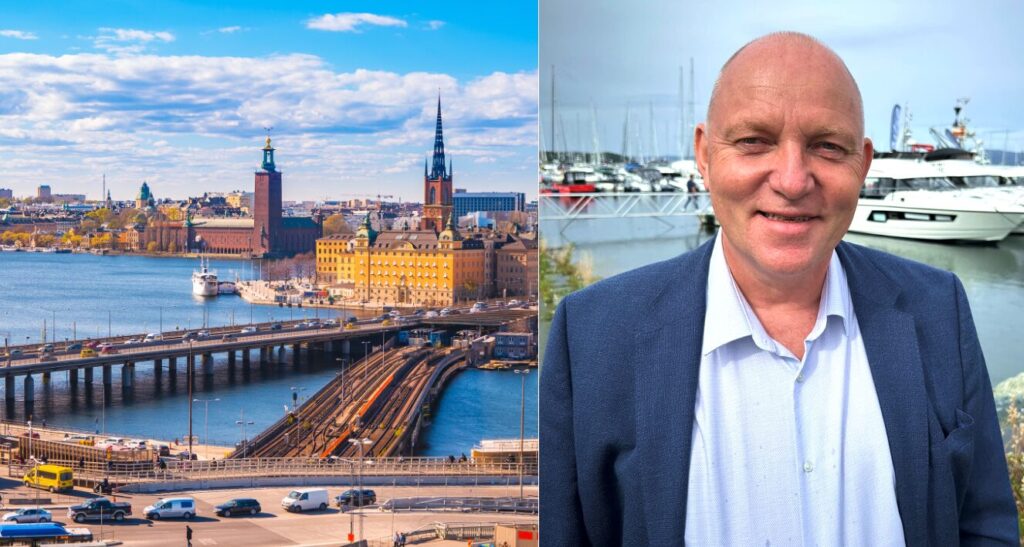

News
Shaping cleaner cities: Steinar Furan on the role of congestion charging in sustainable urban mobility
In this insightful interview, Steinar Furan, Q-Free’s Global Director of Tolling Bids, discusses his three decades of experience in the industry and the growing importance of congestion charging for sustainable urban mobility.
From his early engineering days at Q-Free to leading major tolling projects worldwide, Steinar shares his perspective on how Q-Free’s congestion charging technology is helping cities reduce traffic, lower emissions, and improve urban life. As cities increasingly look for solutions to traffic congestion, Steinar highlights the success of models like Stockholm’s congestion charging scheme and how Q-Free’s flexible, data-driven approach is shaping the future of transportation systems globally.
Can you tell us about your background and experience before joining Q-Free?
Absolutely. Before joining Q-Free, I had a diverse and enriching career. I served in the Royal Norwegian Navy, worked for the oil survey company GECO, and spent four years at EISCAT, an ionospheric research radar facility. I joined Q-Free in 1990 as a young engineer, eager to contribute to an innovative and forward-thinking company.

What attracted you to Q-Free, and what is your role within the company?
When I joined in 1990—back when the company was still known as Micro Design—Q-Free had already established a strong reputation for cutting-edge technology. The emerging need for automatic vehicle identification was particularly exciting to me as an engineer. I started as a production engineer and gradually moved into sales and business development. Today, I serve as Global Manager Bid, overseeing all major tenders within Q-Free’s tolling operations worldwide.
What are some of the significant projects you’ve worked on?
My role has given me the opportunity to work on a wide range of major tolling and congestion charging projects across the globe. Some highlights include Portugal’s Via Verde, Brazil’s Sem Parar, Norway’s AutoPass, and our first systems in Australia—on the Sydney Harbour Bridge and Tunnel. I was also involved in the congestion charging project in Stockholm. In 1999, I led Q-Free’s subsidiary “Q-Free.Com,” which developed Norway’s tolling back office using a Software-as-a-Service model. This later evolved into CS Norway, the unified back office for all toll road operations in the country.
About congestion charging; What is the first thing that comes to mind when you think about Q-Free’s congestion charging technology?
Congestion charging is the most efficient way to reduce congestion in urban areas. The Stockholm congestion charging scheme is our most prominent reference. Designed to address city-center congestion, it successfully decreased traffic levels by over 20%, and average travel times were cut in half. In addition, it improved public transport funding, funding for new infrastructure investments, and improved the urban environment. The system’s success made Stockholm a more attractive city to live in, proving the long-term benefits of well-implemented congestion charging.
Traffic congestion isn’t just inconvenient—it has significant societal costs. Traffic delays cost billions in lost productivity annually all over the world. Efficient traffic management can improve business logistics, reduce fuel consumption, and lower emissions. In many cities, congestion charging revenue is reinvested into public transport and infrastructure, making urban areas more livable and efficient. I find it very exciting to work with solutions that can ease everyday life for millions of people.
When it comes to our solution, I dare to say that it provides unparalleled system performance, ensuring that virtually all vehicles are detected and identified. This maximizes revenue for system owners while maintaining high availability, which is crucial for public and political acceptance. Additionally, our high level of automation ensures the lowest possible operating expenses for our clients.
What are the key trends and most effective solutions for reducing traffic congestion?
While many cities express interest in congestion charging, few have implemented it. London, for example, uses a low-emission zone with a flat fee, whereas Stockholm charges per journey, offering a stronger incentive to reduce trips. The Stockholm model has proven to be more effective in reducing congestion.
The market for congestion charging is expanding, particularly as more cities recognize its benefits worldwide.
How do you see the market evolving over the next 5–10 years?
Low Emission Zones (LEZs) like those in London and Milan will become more common, especially with EU mandates requiring cities to act against pollution. The Stockholm model—where driving is permitted but discouraged during peak times—will also gain popularity, particularly in large urban areas where outright bans on vehicle types are impractical. Cities like Oslo, Bergen, and Trondheim are already incorporating congestion charging functionality into their toll cordons.
What makes Q-Free’s approach unique?
Every city has different mobility challenges, and a one-size-fits-all approach doesn’t work. Q-Free provides flexible, customizable solutions that align with each city’s priorities. Some cities may benefit most from congestion charging, while others might need a mix of dynamic tolling, road user charging, or multimodal traffic management.
The key is using data and technology to create the most effective strategy for each location. Q-Free stands out in understanding local requirements and navigating the complexities cities face in implementing the right solution.